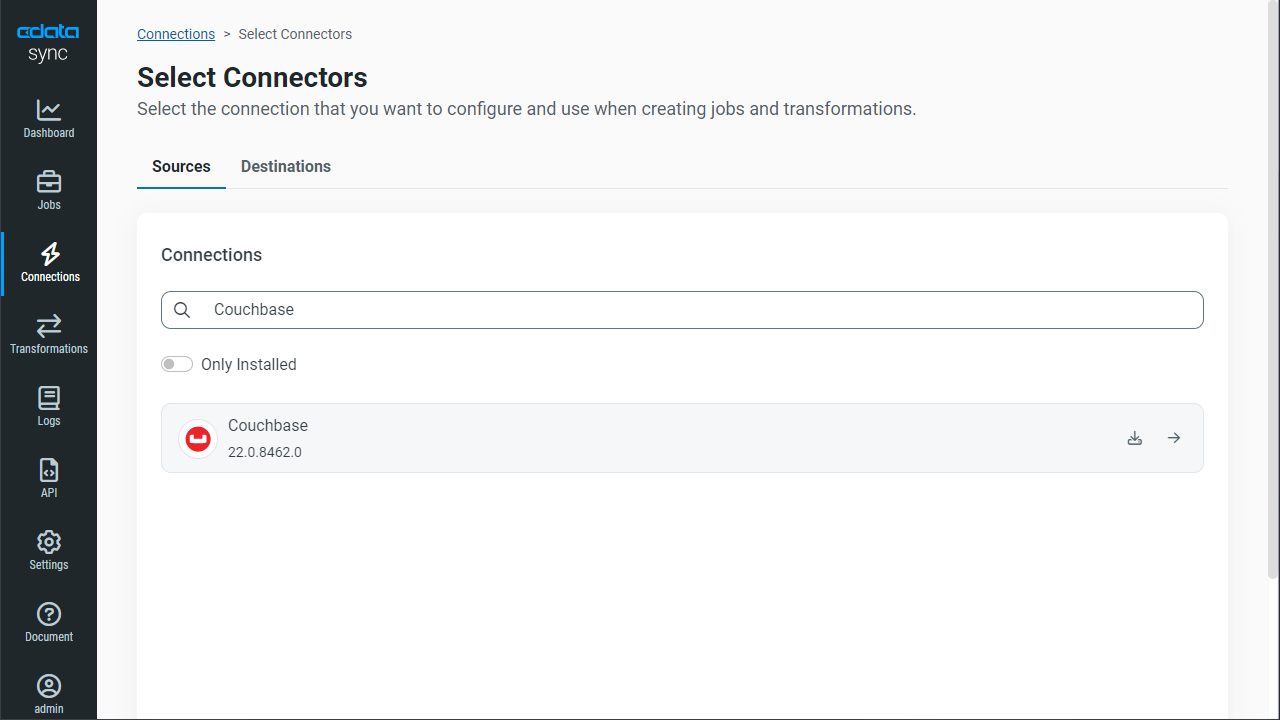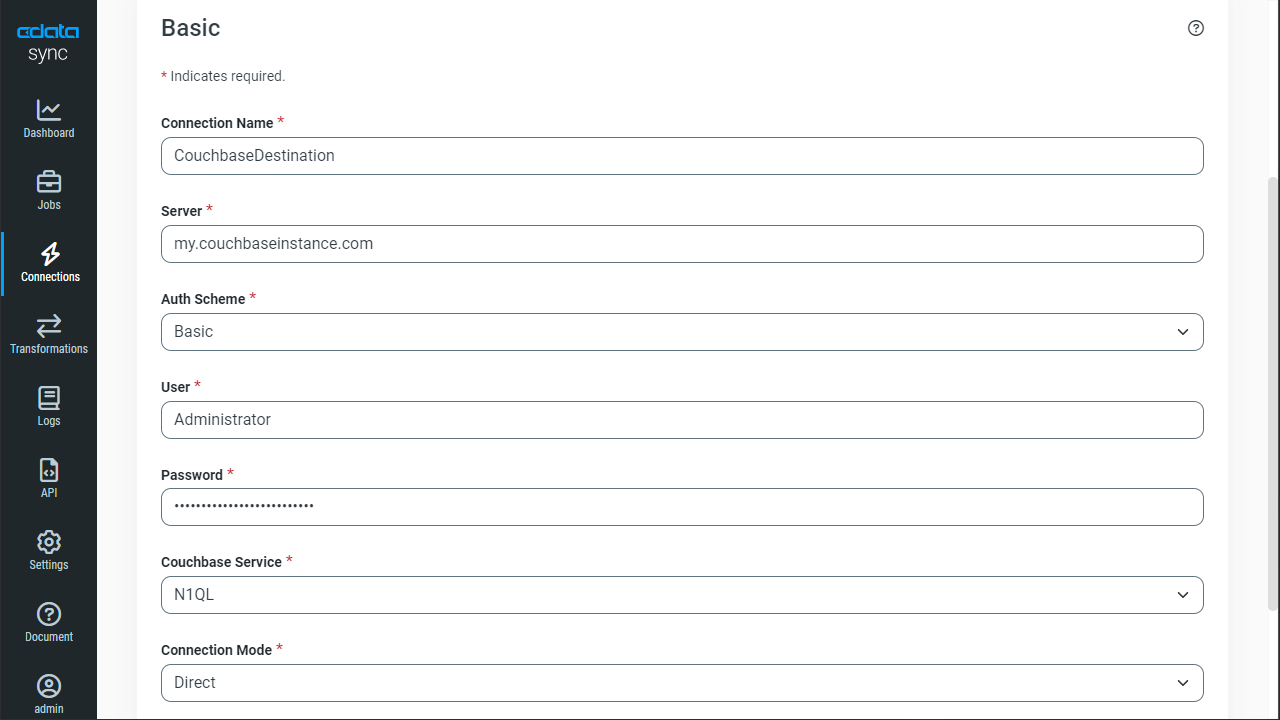Discover how a bimodal integration strategy can address the major data management challenges facing your organization today.
Get the Report →Automate Snowflake Data Replication to Couchbase
Use CData Sync to Customize and automate Snowflake data replication to Couchbase.
Always-on applications rely on automatic failover capabilities and real-time access to data. CData Sync integrates live Snowflake data into your Couchbase instance, allowing you to consolidate all of your data into a single location for archiving, reporting, analytics, machine learning, artificial intelligence and more.
About Snowflake Data Integration
CData simplifies access and integration of live Snowflake data. Our customers leverage CData connectivity to:
- Reads and write Snowflake data quickly and efficiently.
- Dynamically obtain metadata for the specified Warehouse, Database, and Schema.
- Authenticate in a variety of ways, including OAuth, OKTA, Azure AD, Azure Managed Service Identity, PingFederate, private key, and more.
Many CData users use CData solutions to access Snowflake from their preferred tools and applications, and replicate data from their disparate systems into Snowflake for comprehensive warehousing and analytics.
For more information on integrating Snowflake with CData solutions, refer to our blog: https://www.cdata.com/blog/snowflake-integrations.
Getting Started
Configure Replication Destinations
Using CData Sync, you can replicate Snowflake data to Couchbase. To add a replication destination, navigate to the Connections tab.
- Click Add Connection.
- Select Couchbase as a destination.
![Configure a Destination connection to Couchbase.]()
- Enter the necessary connection properties.
- Server - Enter either the host name or the IP address of your Couchbase server.
- Auth Scheme - Select the authentication scheme. Basic is the default setting. For this setting, specify your login credentials:
- User - Enter the username that you use to authenticate to Couchbase.
- Password - Enter the password that you use to authenticate to Couchbase.
- Couchbase Service - Select the Couchbase service that you want to use. The default service is N1QL.
- Connection Mode - Select the connection mode that you want to use. The default mode is Direct.
- Use SSL - Specify whether you want to use the Secure Sockets Layer (SSL) protocol. The default value is False.
- Click Test Connection to ensure that the connection is configured properly.
![Configure a Destination connection.]()
- Click Save Changes.
Configure the Snowflake Connection
You can configure a connection to Snowflake from the Connections tab. To add a connection to your Snowflake account, navigate to the Connections tab.
- Click Add Connection.
- Select a source (Snowflake).
- Configure the connection properties.
To connect to Snowflake:
- Set User and Password to your Snowflake credentials and set the AuthScheme property to PASSWORD or OKTA.
- Set URL to the URL of the Snowflake instance (i.e.: https://myaccount.snowflakecomputing.com).
- Set Warehouse to the Snowflake warehouse.
- (Optional) Set Account to your Snowflake account if your URL does not conform to the format above.
- (Optional) Set Database and Schema to restrict the tables and views exposed.
See the Getting Started guide in the CData driver documentation for more information.
![Configure a Source connection (Salesforce is shown).]()
- Click Connect to ensure that the connection is configured properly.
- Click Save Changes.
Configure Replication Queries
CData Sync enables you to control replication with a point-and-click interface and with SQL queries. For each replication you wish to configure, navigate to the Jobs tab and click Add Job. Select the Source and Destination for your replication.
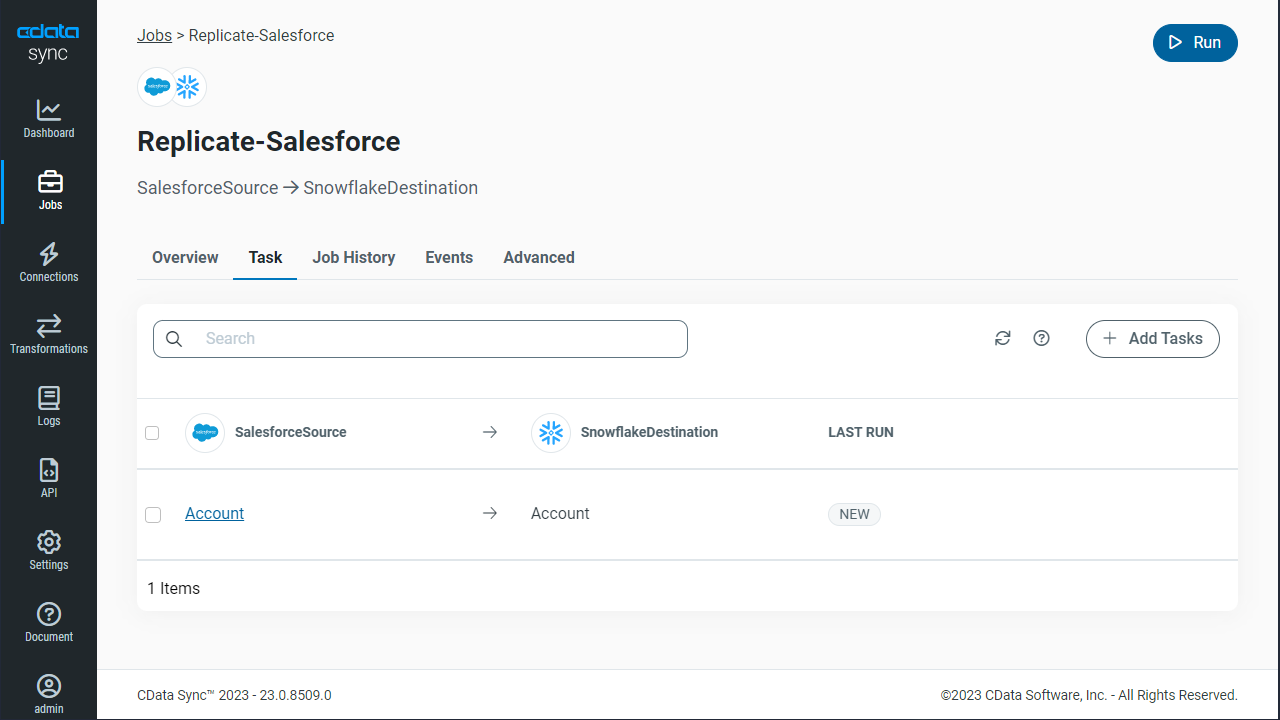
Replicate Entire Tables
To replicate an entire table, click Add Tables in the Tables section, choose the table(s) you wish to replicate, and click Add Selected Tables.
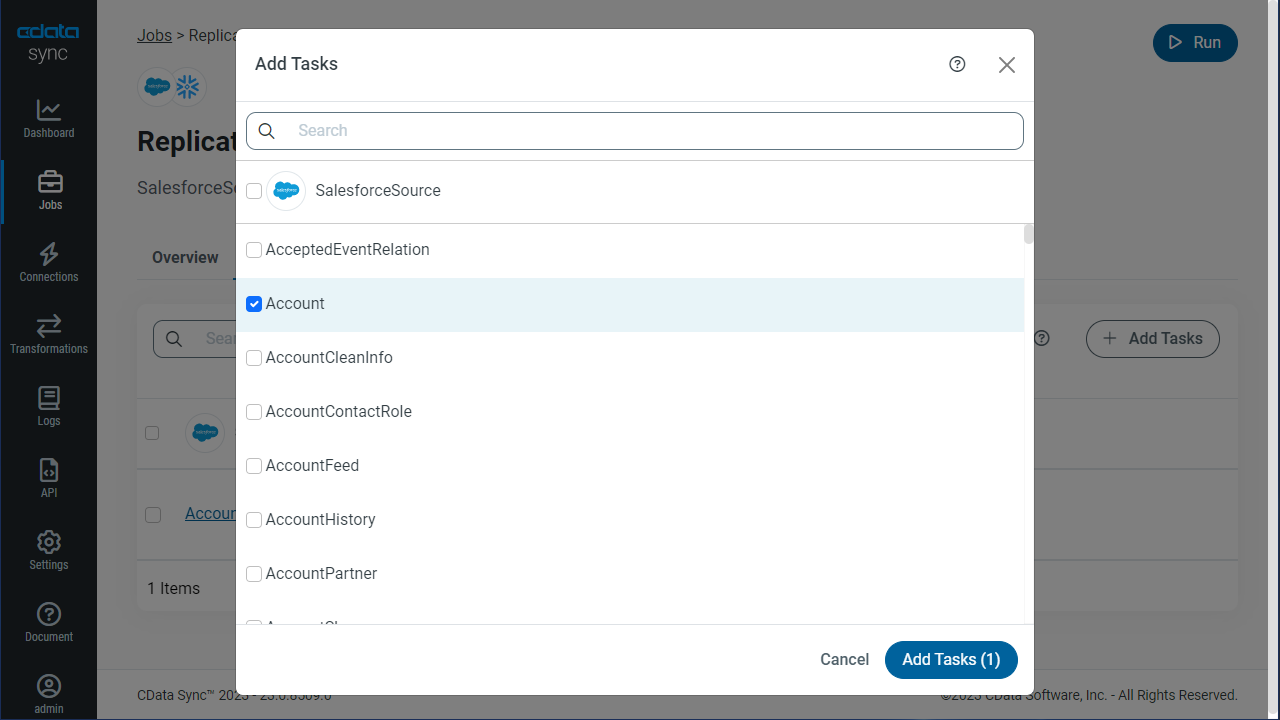
Customize Your Replication
You can use the Columns and Query tabs of a task to customize your replication. The Columns tab allows you to specify which columns to replicate, rename the columns at the destination, and even perform operations on the source data before replicating. The Query tab allows you to add filters, grouping, and sorting to the replication.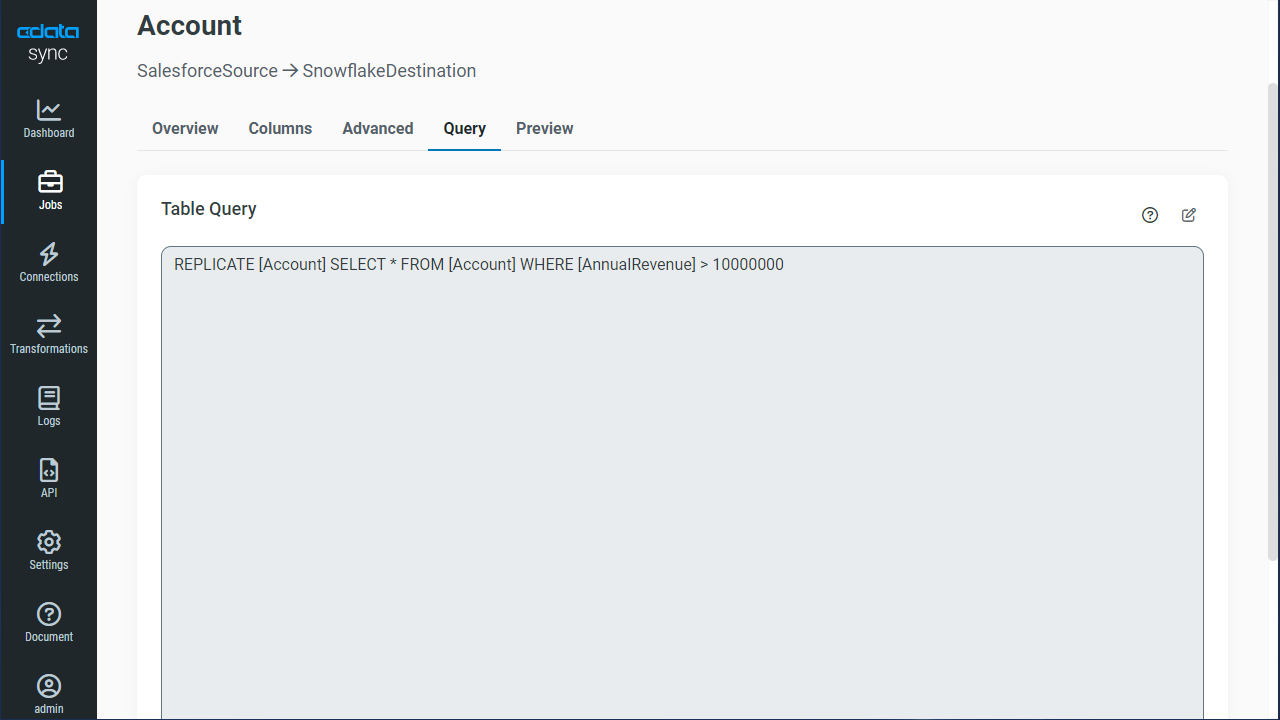
Schedule Your Replication
In the Schedule section, you can schedule a job to run automatically, configuring the job to run after specified intervals ranging from once every 15 minutes to once every month.
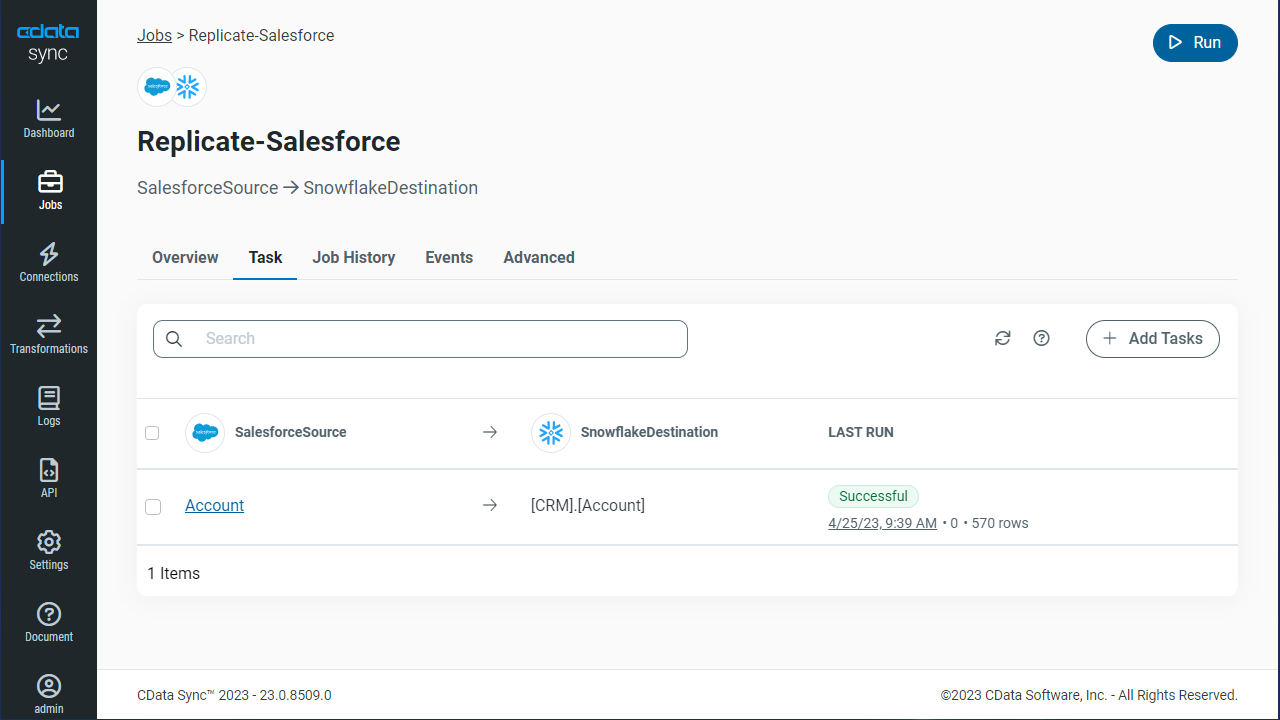
Once you have configured the replication job, click Save Changes. You can configure any number of jobs to manage the replication of your Snowflake data to Couchbase.





